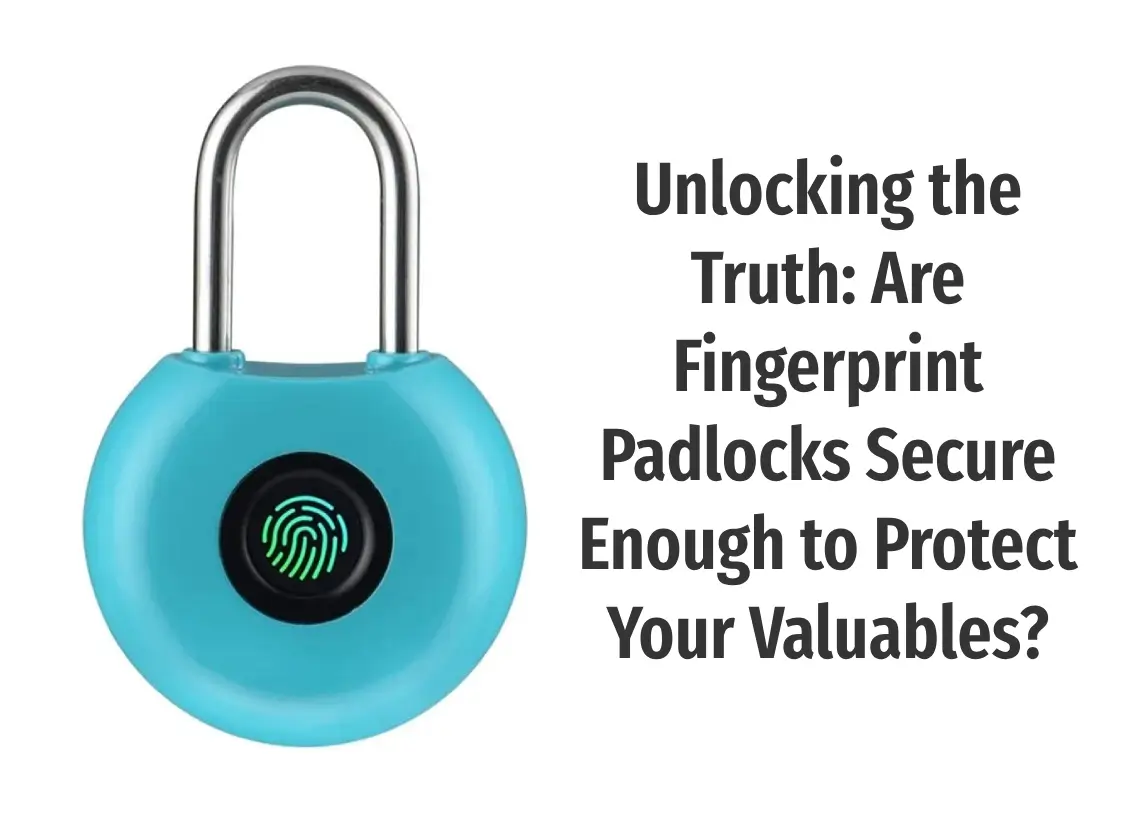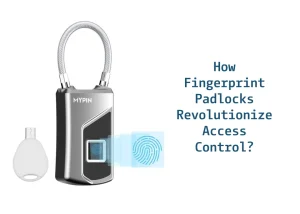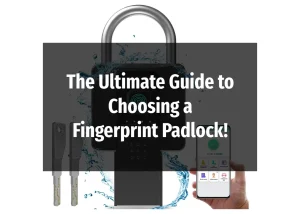In today’s digital age, security is a paramount concern for individuals and businesses alike. With the rise of smart technology, traditional locks are being replaced by more advanced and convenient alternatives. One such innovation is the fingerprint padlock, which offers the promise of enhanced security through biometric authentication. In this article, we will explore the world of fingerprint padlocks and delve into the question: Are fingerprint padlocks secure enough to protect your valuables?
How do Fingerprint Padlocks Work?
Fingerprint padlocks utilize cutting-edge biometric technology to provide access control. The lock is equipped with a built-in fingerprint sensor, which captures and stores unique biometric information of authorized users. When a person tries to unlock the padlock, their fingerprint is scanned and compared to the stored data. If the fingerprint matches, the lock is released, granting access. This seamless integration of biometrics ensures that only authorized individuals can unlock the padlock, making it an attractive solution for those seeking convenience without compromising security.
The Security of Fingerprint Padlocks
Fingerprint padlocks offer a high level of security due to the uniqueness of each individual’s fingerprint. Unlike traditional locks that can be picked or keys that can be duplicated, fingerprint padlocks rely on a biometric characteristic that is nearly impossible to replicate. This makes them highly resistant to unauthorized access. Additionally, modern fingerprint padlocks have advanced algorithms and sensors that can detect artificial fingerprints, ensuring that only real fingerprints are accepted.
Another aspect of security offered by fingerprint padlocks is the ability to add multiple authorized users. This is particularly useful for businesses or families where different individuals may require access to the same lock. By programming multiple fingerprints into the lock, it becomes a convenient and secure solution for granting access to a select group of people.
Advantages of Using Fingerprint Padlocks
Using fingerprint padlocks comes with several advantages. Firstly, they eliminate the need to carry keys or remember complex combinations. With a simple touch of your finger, you can unlock the padlock effortlessly. This convenience is especially valuable in situations where quick and frequent access is required, such as in shared workspaces or gym lockers.
Furthermore, fingerprint padlocks provide a higher level of security compared to traditional locks. The unique nature of fingerprints ensures that only authorized individuals can gain access, reducing the risk of theft or unauthorized entry. Additionally, fingerprint padlocks remove the possibility of losing keys or forgetting combinations, as your fingerprint is always with you.
Limitations and Vulnerabilities of Fingerprint Padlocks
While fingerprint padlocks offer enhanced security, they are not without their limitations and vulnerabilities. One of the main concerns is the possibility of false negatives or false positives. A false negative occurs when an authorized user’s fingerprint is not recognized, leading to denied access. On the other hand, a false positive happens when an unauthorized person’s fingerprint is mistakenly accepted, granting them access.
Another limitation of fingerprint padlocks is their vulnerability to physical damage. If the sensor or the electronic components of the padlock are tampered with or damaged, it may render the lock useless. This is in contrast to traditional locks, which may still function even if they are slightly damaged or worn.
Comparing Fingerprint Padlocks to Traditional Locks
When comparing fingerprint padlocks to traditional locks, there are several factors to consider. Firstly, fingerprint padlocks offer a higher level of convenience, as they eliminate the need for keys or combinations. This can be particularly advantageous in situations where multiple individuals require access to the same lock. Additionally, fingerprint padlocks provide a more secure solution due to the unique nature of biometrics.
However, traditional locks have their own advantages. They are generally more affordable and easier to replace if lost or damaged. Traditional locks also do not rely on batteries or power sources, making them more reliable in situations where power may be unavailable.
Ultimately, the choice between a fingerprint padlock and a traditional lock depends on the specific needs and preferences of the user. Both options have their own set of advantages and limitations, and it is important to consider these factors when making a decision.
Factors to Consider When Choosing a Fingerprint Padlock
When choosing a fingerprint padlock, there are several factors to consider to ensure optimal security and functionality. Firstly, it is important to select a padlock from a reputable manufacturer that has a proven track record in biometric security. This will ensure that you are purchasing a reliable and secure product.
Additionally, consider the durability and weather resistance of the padlock. If you plan to use the padlock outdoors or in harsh environments, choose a model that is specifically designed to withstand such conditions. Furthermore, consider the battery life and ease of battery replacement, as a dead battery can leave you locked out of your valuables.
Lastly, look for additional features such as backup access methods in case of fingerprint recognition failure, and the ability to easily manage and add or remove authorized users. These features can greatly enhance the usability and security of the padlock.
Tips for Using Fingerprint Padlocks Effectively
To ensure the optimal effectiveness of your fingerprint padlock, there are a few tips to keep in mind. Firstly, regularly clean the fingerprint sensor to remove any dirt or residue that may hinder its performance. A clean sensor will ensure accurate fingerprint recognition and reduce the chances of false negatives or false positives.
Additionally, it is important to properly register your fingerprint during the setup process. Follow the manufacturer’s instructions carefully to ensure that your fingerprint is captured accurately. Avoid applying excessive pressure or angling your finger, as this may affect the quality of the fingerprint scan.
Lastly, always have a backup method of access in case of any technical issues or emergencies. This can be a secondary fingerprint or a backup key, depending on the model of the padlock. By having a backup plan, you can ensure that you are never locked out of your valuables.
Real-Life Examples of Fingerprint Padlock Security Breaches
While fingerprint padlocks offer enhanced security, they are not immune to security breaches. In recent years, there have been reports of hackers successfully bypassing the fingerprint authentication of certain models of fingerprint padlocks. These breaches highlight the importance of choosing a reputable manufacturer and regularly updating the firmware of your padlock to protect against potential vulnerabilities.
It is worth noting, however, that these security breaches are relatively rare and require a high level of technical expertise. For the average user, fingerprint padlocks still provide a significantly higher level of security compared to traditional locks.
Conclusion: Are Fingerprint Padlocks Secure Enough to Protect Your Valuables?
Fingerprint padlocks offer a convenient and secure solution for protecting your valuables. With their advanced biometric technology, they provide a higher level of security compared to traditional locks. The uniqueness of each individual’s fingerprint ensures that only authorized users can gain access, reducing the risk of theft or unauthorized entry.
While fingerprint padlocks have their limitations and vulnerabilities, such as the possibility of false negatives or physical damage, these risks can be mitigated by choosing a reputable manufacturer and following best practices for usage. By considering the factors discussed in this article and taking necessary precautions, fingerprint padlocks can effectively secure your valuables in both personal and professional settings.
So, are fingerprint padlocks secure enough to protect your valuables? The answer is yes, as long as you choose a reliable and reputable fingerprint padlock and use it in conjunction with other security measures. Embrace the convenience and enhanced security that fingerprint padlocks offer, and rest assured that your valuables are protected by the power of biometrics.




